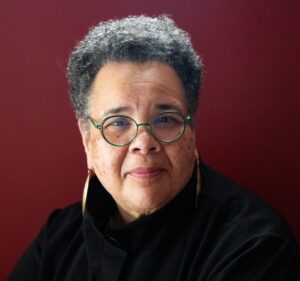
Build, Compose, Make
Below is the jargon which has pervaded our conversation. I call this the “re-” lexicon:
| re-design | re-invent |
| re-arrange | re-imagine |
| re-create | re-think |
| re-conceive | re-examine |
| re-vision | re-consider |
| re-work | re-cover |
The call to “re-” the system of education has been in response to shrinking student pools, dwindling tenure-track positions, collapsing denominational structures, tightening budgets, rising awareness of student debt, curriculum misalignment, and the mounting backlog of deferred maintenance on aging buildings. Even before the shift in the federal government’s relationship to education, theological education needed an overhaul. The list of words entered our discussion but their potential nor their aspiration has not been fully realized.
Many schools have taken on the task of rethinking their institutions – most in reaction to crisis. Many of the “re” processes assumed that what has served well should be mended, fixed and pressed back into service. Administrators, in planning institutional changes, started with strategies to restore what had served admirably in the past. Many schools rethought their curriculum for existing degree programs, added certificated programs, replaced tenured faculty positions with the hire of contingency faculty, sold land, increased their endowment draw down, and hoped for increased student enrollment. These strategies, depending upon the context, have had a modicum of success. Indeed, some vulnerable schools have prolonged their demise. Other schools are announcing downsizing and closings. Our attempt at “re” is faltering.
Not only have leaders failed to figure out a way to revitalize theological education as an enterprise, the patched-together strategies are likely not to be sustainable 5, 10, 20 years into the future. There is palpable fear that given the new realities of the digital age’s influence on teaching, exacerbated by the lack of crisis management skills of deans and presidents, schools will not accomplish the hoped for “reset” in theological education.
We are confounded. Yet, we are persuaded.
Theological leaders are convinced that our society—now and into the future—is better with a vibrant and thriving theological education enterprise. Leaders believe that the societal need for educated faith leaders—clergy and laity—has increased and will continue to grow. We believe theology and religion will prove more, not less, relevant in the digital age. We know that the church as well as all forms of organized religion are the major stakeholders in theological education. Our work is paramount—if only we can figure out how to craft new, accessible systems.
Given the severity of the situation, what if it is ultimately detrimental to repair or restore our current paradigms of education? What if fixing the current system is tantamount to patching bicycle tires only to return to riding on nail-riddled roads? From my vantage point, our challenge, rather than repairing the current, is to let go of the past. We must freshly build, compose, make, and design news systems of theological education based upon a future we do not know but that is coming quickly.
What if the solutions lie in building new systems from scratch? What would it mean to compose brand new approaches to educational needs? How can we fashion new pedagogical apparatuses? What would it take to manufacture the new and the needed educational models?
Leaders have, in the past, relied on institutional traditions and strategic planning. Those tools were helpful, but no longer sufficient. Now is the time for a creative process. We must ask ourselves not about repair and retrench, but about the new. What new - that is yet to be realized -will be the very thing to produce the next educational system?
This is not a call to be creative as much as it is a call to create.

The Wabash Center has partnered with Najee Dorsey. An exquisite artist in his own right, Najee is the founder of Black Art in America (BAIA). Under Najee’s leadership, BAIA is a community art gallery and garden dedicated to teaching art, creativity, and artist advocacy. BAIA hosts our cohort groups as part of an effort to expose our faculty to artists, the creative process, and imagination. Najee and the artist colleagues guide scholars in future-building ways of thinking. Participants engage directly with artists about their work and lives—as creators, producers, and visionaries. At BAIA, scholars encounter colleagues whose careers are devoted to building and making. The shift from being creative to becoming a creator requires tactile, embodied learning. Najee knows this terrain.
In the conversations between the BAIA artists and our participants, I have noticed consistent themes in the conversations. Artists wake up each day with the question of What am I going to create? in the forefront of their minds, then align their schedule to accommodate time for creating. Creatives are not afraid to be wrong or make mistakes. We must consider that unless educational systems celebrate rather than stigmatize risk-taking, failure, and experimentation, no new systems will emerge. A creative process causes you to change what you can see and challenge what you have previously seen. Creatives do not believe dreams are ancillary to the process. They embrace visions, daydreams, visitations, nightmares, wishes and messages from earth, wind, fire and water. They inhabit many worlds. What would it take for us to, collectively, think in these modes and frames?
Exposing theology and religion colleagues to the profound understandings of artists, artists’ lifestyles, as well as providing colleagues with a glimpse of the creative process is a way that the Wabash Center is championing the need for leaders in education to build, craft, make a new paradigm of theological education that is original and sustainable.
I do not believe the future of theological education to be condemned nor foreclosed. Our future is, however, dependent upon our willingness and understanding that the new is needed and that we must, together, create the new if it is to exist. Who among us has the guts to proceed?
Reflection
- What would it mean to use the creative process to design and build new educational structures?
- What would it take to collaborate with artists in developing new educational structures?
- In your context, who are the conversation partners for the shift in mindset to a lifestyle and daily practice of building, composing, and making?
Leave a Reply